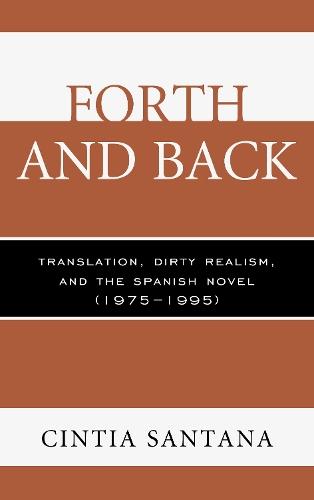Full Product Details
Author: Cintia Santana
Publisher: Bucknell University Press
Imprint: Bucknell University Press
Dimensions:
Width: 15.90cm
, Height: 236.20cm
, Length: 23.40cm
Weight: 0.431kg
ISBN: 9781611484601
ISBN 10: 161148460
Pages: 192
Publication Date: 27 June 2013
Audience:
Professional and scholarly
,
Professional & Vocational
Format: Hardback
Publisher's Status: Active
Availability: In Print

This item will be ordered in for you from one of our suppliers. Upon receipt, we will promptly dispatch it out to you. For in store availability, please contact us.
Reviews
Focusing on postdictatorship Spain, transition to democracy, and the meaning of 'nation-ness,' Santana (Stanford Univ.) takes a welcome look at the effervescent translations of US literature in Spain, in particular of 'dirty realism.' The sociopolitical and economic context the author provides affords the reader a thorough understanding of the reception of translated US dirty realism in the Spanish literary market and of the remarkable influence of Raymond Carver, Tobias Wolff, and Richard Ford on young Spanish novelists in the 1990s. In looking at American culture, dirty realism exposed a latent private interior behind the external images exported from the US by Hollywood and politicians. The genre appealed to Spanish readers and writers not simply as a reflection of anti-American sentiment-given the ambivalence of Spain's government toward the US during this twenty year period-but because Spanish dirty realism narrative provided the means to express desencanto (disillusion) at Spain's politics, economy, and role in a globalized world while questioning the Spanish novel at the end of the twentieth century. Expertly documented and soundly written, this book challenges how one reads across languages and how 'nation-ness' is constructed vis-a-vis those readings. Summing Up: Recommended. Graduate students, researchers, faculty. CHOICE
Focusing on postdictatorship Spain, transition to democracy, and the meaning of 'nation-ness,' Santana (Stanford Univ.) takes a welcome look at the effervescent translations of US literature in Spain, in particular of 'dirty realism.' The sociopolitical and economic context the author provides affords the reader a thorough understanding of the reception of translated US dirty realism in the Spanish literary market and of the remarkable influence of Raymond Carver, Tobias Wolff, and Richard Ford on young Spanish novelists in the 1990s. In looking at American culture, dirty realism exposed a latent private interior behind the external images exported from the US by Hollywood and politicians. The genre appealed to Spanish readers and writers not simply as a reflection of anti-American sentiment--given the ambivalence of Spain's government toward the US during this 20-year period--but because Spanish dirty realism narrative provided the means to express desencanto (disillusion) at Spain's politics, economy, and role in a globalized world while questioning the Spanish novel at the end of the 20th century. Expertly documented and soundly written, this book challenges how one reads across languages and how 'nation-ness' is constructed vis-a-vis those readings. Summing Up: Recommended. Graduate students, researchers, faculty. CHOICE
Author Information
Cintia Santana is a lecturer at Stanford University.




